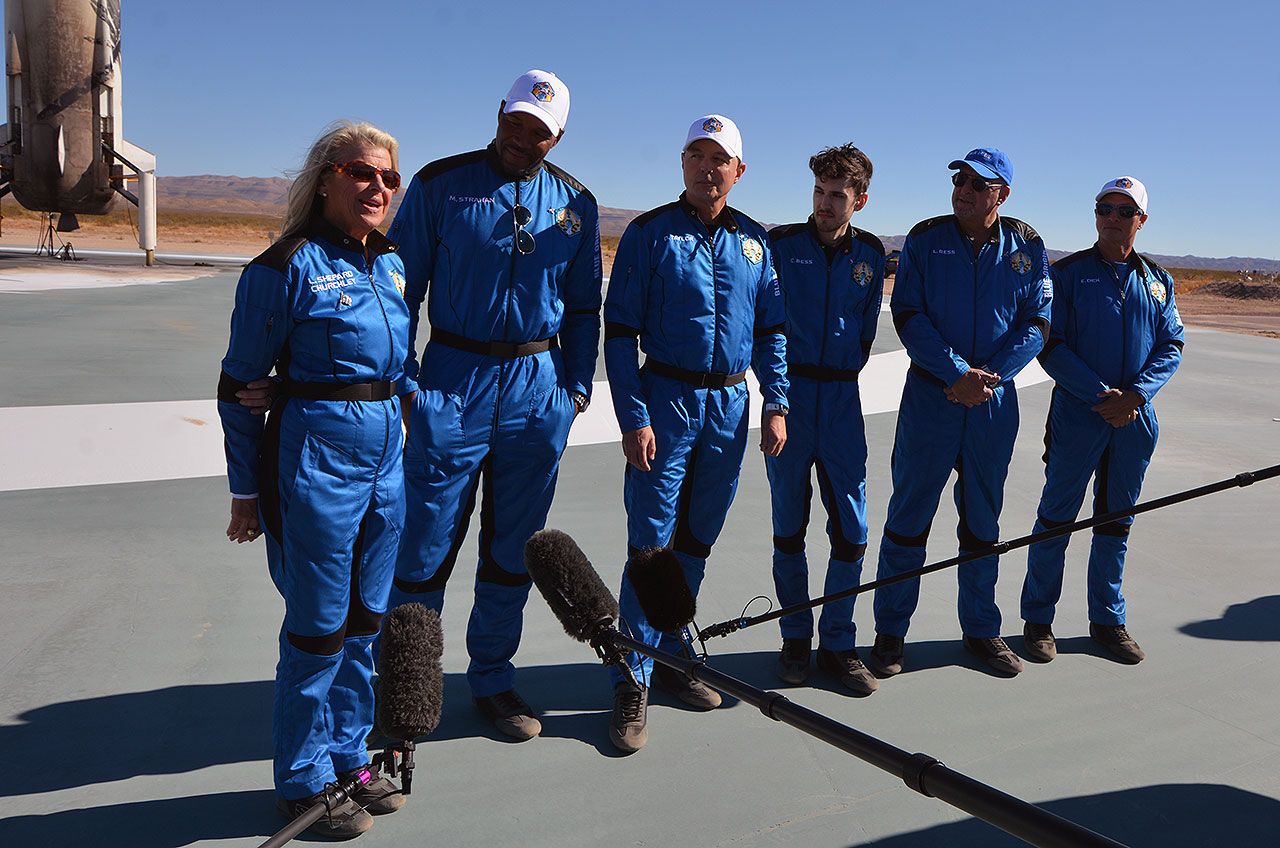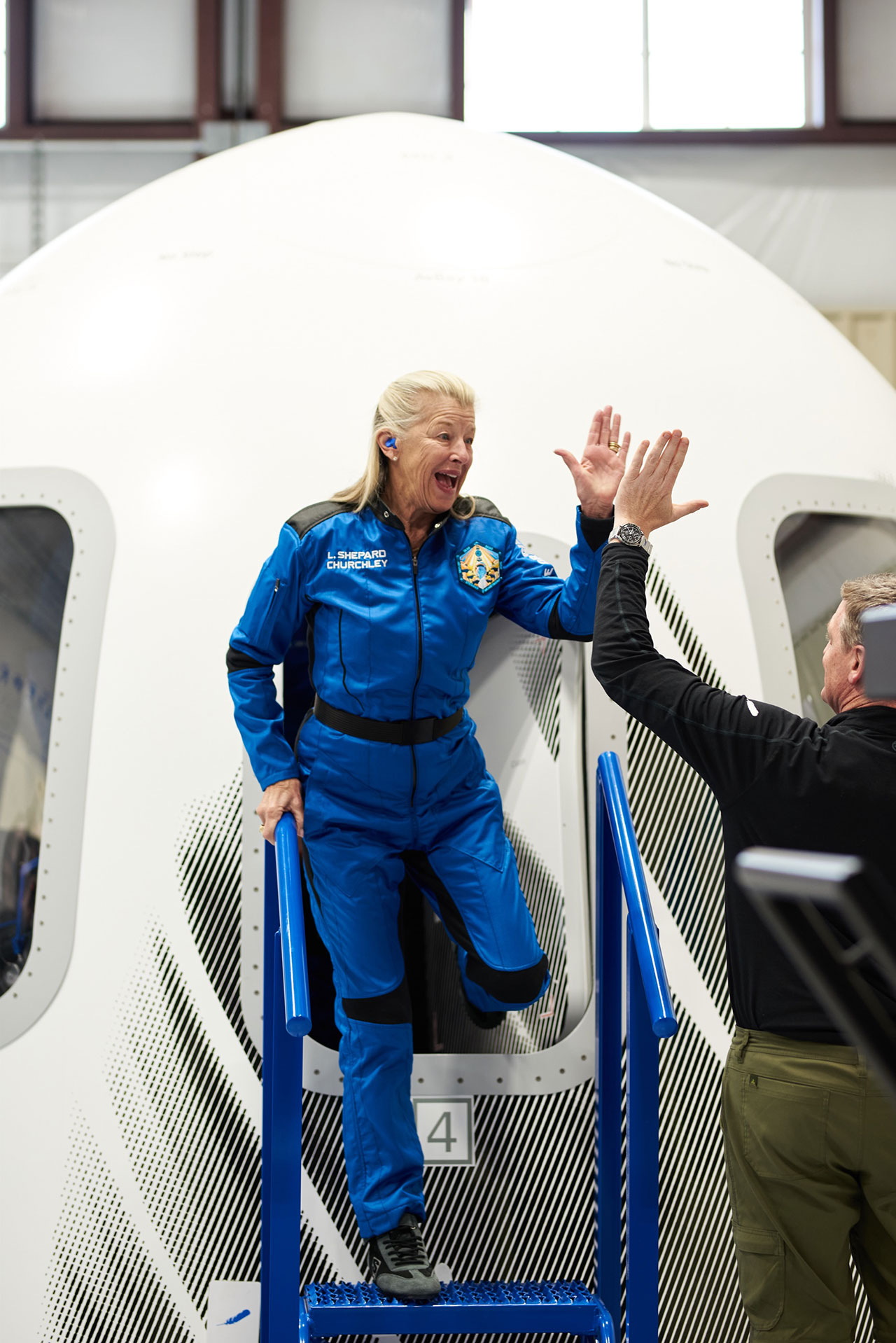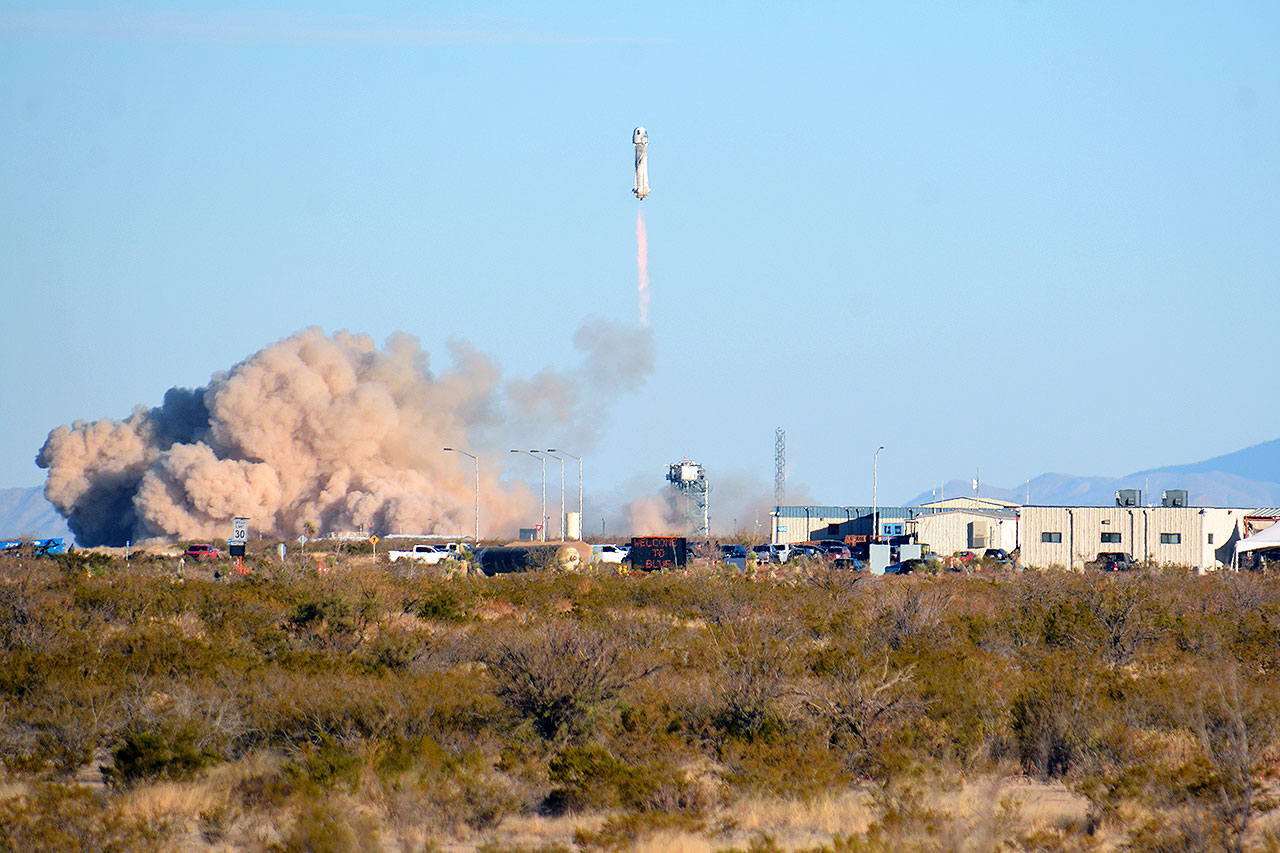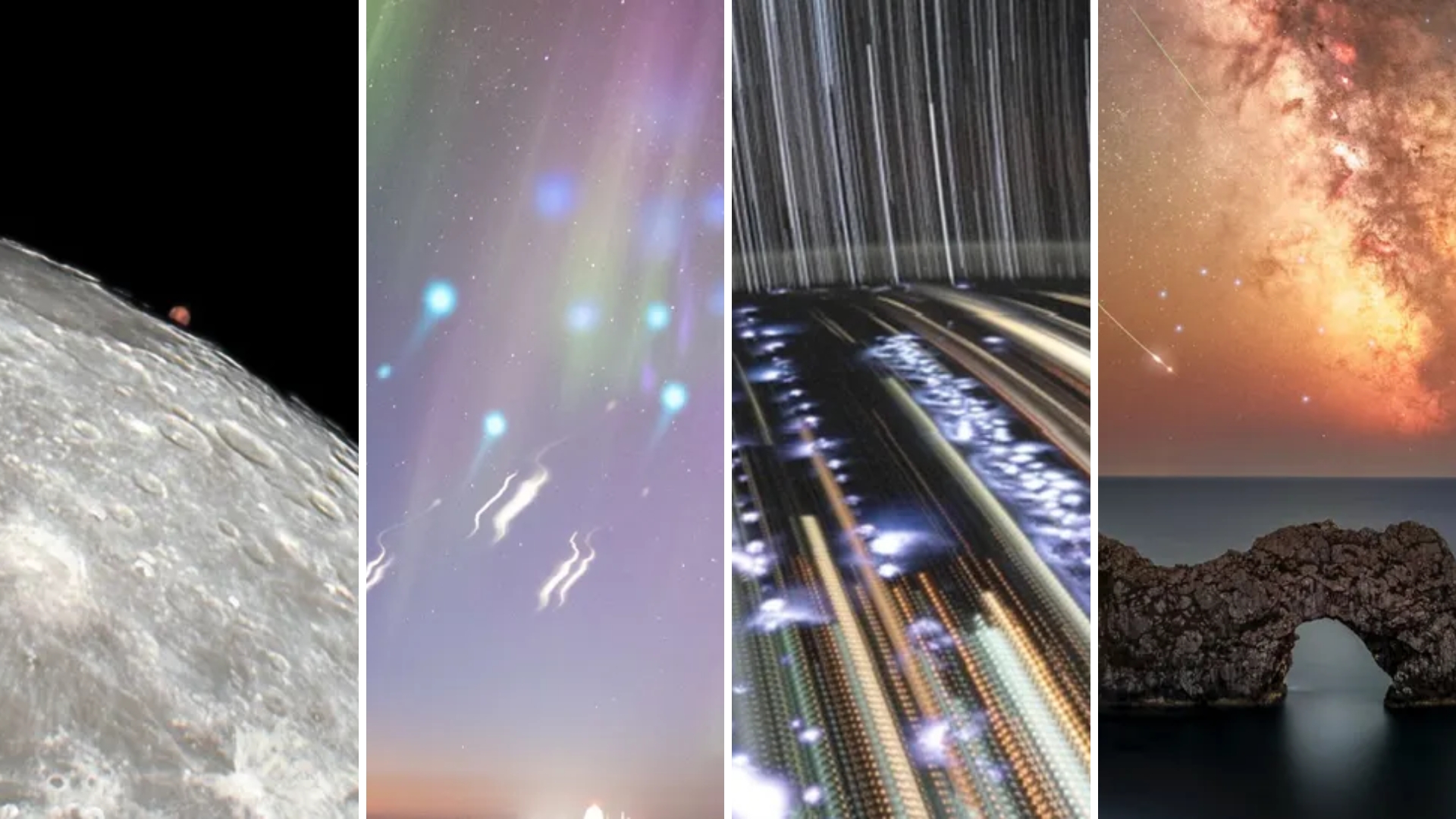Post-flight interview: Astronaut's daughter reflects on her own launch on Blue Origin
"It is fun to have people call me Astronaut Churchly ... but I am torn, because I have a whole other definition of 'astronaut.'"

Laura Shepard Churchley is not sure if she is now an astronaut.
The eldest daughter of Alan Shepard, America's first astronaut to fly into space, Churchley followed in her father's footsteps — and trajectory — lifting off on Dec. 11 aboard the New Shepard, Blue Origin's suborbital launch vehicle named after her dad. The 10-minute flight established Churchley as the 605th person (and 372nd American) to soar above Earth, but she did so without needing the months- or years-long preparation her father and his fellow astronauts had to undergo.
"From my experience, from sixth grade until Daddy passed away, and then after Daddy — actually, I have been aware of space and astronauts forever, and I don't know if I feel like an astronaut," Churchley said in an interview with collectSPACE.com on Thursday (Dec. 16), five days after she lifted off as a guest of Blue Origin on its New Shepard 19 (NS-19) spaceflight. "Because I didn't train and they trained for years for their flights."
Related: Shepard vs New Shepard: How astronaut daughter's Blue Origin launch stacks up
Not that she minds others giving her the title. Upon landing, Blue Origin founder Jeff Bezos pinned a set of the company's astronaut wings on her flight suit and she will be among the last people to receive commercial astronaut wings as awarded by the Federal Aviation Administration. (The FAA is ending the program at the end of the year now that multiple U.S. companies are sending people into space.)
"It is fun to have people call me Astronaut Churchly and I am glad we were among the last (to get FAA wings), but I am torn, because I have a whole other definition of 'astronaut' because of all the astronauts I have known. So I don't really consider myself an astronaut."
Whatever she is called now, Churchley is certain of one thing: she greatly enjoyed being the first "real Shepard" on board the New Shepard. What started as a passing comment at a gala for the 50th anniversary of her father's Apollo 14 moon mission became the experience of her lifetime.
Breaking space news, the latest updates on rocket launches, skywatching events and more!

Churchley recounted her flight and the events that led up to it during two calls with collectSPACE, one that preceded and one that followed her launch, as well as a brief exchange beside her rocket within a few hours of her landing. Her comments here have been combined from those conversations and edited for length and clarity.
collectSPACE (cS): Before we talk about the flight itself, how did you come to be invited to fly with Blue Origin?
Laura Shepard Churchley: It started in June of this year. There is an organization called Back To Space that put together a 50th anniversary celebration for Apollo 14, the mission when Daddy landed on the moon. The woman who started it is the granddaughter of Stuart Roosa, who was on the Apollo 14 crew as well.
It was during that celebration, when I made the comment, "Wouldn't it be nice if a real Shepard rode on the New Shepard?" and apparently somebody knew Bezos or had a connection to him. I don't know exactly what happened. No one has told me, but it was at the end of September when I received a call and they asked if I wanted to be on the next launch. I said yes.
cS: Skipping ahead to just a few days before you were scheduled to launch, you arrived at Blue Origin's Launch Site One in West Texas to undergo training. How did that go?
Churchley: We had two and a half days of pretty much eight-hour days [of instruction] and it was extremely informative. Plus, we got to go into the simulator at least 20 times and run the 10-minute flight. So when I strapped into my harness on the morning of our launch, I was cool as a cucumber. I couldn't believe I knew what was going to happen before it happened. It was just like having another run in the simulator. The training was intense, but certainly worth it.

cS: I understand that the New Shepard simulator reproduces some of the sounds that you experience in flight, but what about the G-forces (the force of gravity)?
Churchley: They told us about it. Going up, it was like two G's [twice the force of gravity]. I could lift my hands off of the armrest and I really didn't feel it in my chest because, while we were not prone, we we were not sitting straight up and that helped.
Coming down, though, it was 6.5 G's and I couldn't lift my arms off of the armrest. I could feel this heavy, heavy pressure on my chest. So I took as big a breath as I could and I held it, because I knew it was only going to be like that for 30 seconds.
cS: Just like your father's launch on Freedom 7, your liftoff experienced a weather delay. Were you frustrated by the scrub?
Churchley: Well, we were told about it during our training on the morning before we were originally scheduled to launch and so everyone was picking up their phones to call the people they had coming so that they could redo their schedules and it was quiet. It was just quiet and we all were a little unhappy. But as soon as we took off our flight suits and got into our street clothes, we found things to do.
I went for [an airplane] flight with [crewmate] Evan Dick, and our trainer, Kevin, and we flew for over an hour. Evan made us weightless [by flying parabolas], which was fun. And then after we returned, we went to lunch and got a golf game going with [our crewmate] Michael [Strahan] and his best friend.
The nine hole golf course in Van Horn was closed that day, so someone called the mayor and the mayor went and opened the golf course for us. I've never played a desert course before. It's a bit different looking of a course than what I'm used to, but we had a wonderful time.
And so the break was welcome, because we had been going straight for four days. It was just perfect. It's just what everybody needed. And then we went right back into a half day of training the next day. And then we shot off, and everybody was perfectly content because we knew what was going to happen.
cS: You mentioned being "as cool a cucumber" on the day of the launch. How did your feelings that morning compare to 60 years ago, when from a boarding school in St. Louis you watched your dad lift off on his first spaceflight?
Churchley: It's usually harder for people on the ground to watch a launch. I was in the headmaster's house with the Dean of Girls, the Dean of Boys, all of the house mothers, the principal of the school, the president of the corporation — all of the people that an eighth-grade person did not want to have to talk too long. They put me on a piano bench in front of cute little black and white TV.
And I leaned forward really close to the television and I said, "Daddy, please don't mess up." But I knew he'd be fine. He had talked to us throughout the two years of his training and I knew NASA was going to bring him home safely, so there was nothing for me to worry about.

cS: Let's step through your own launch. Did the ascent meet your expectations?
Churchley: The launch was very exciting. You could feel the strength of the rocket taking off. It was just so powerful. That was something that they couldn't simulate in training. It kind of reminded me of driving with Daddy in the Corvette, when he'd step on the accelerator and my head would go back into the chair. It was very exhilarating.
The only thing that was a little spooky is that it launches at an angle. It doesn't go straight up. And so there were about eight seconds where we all were kind of hesitant because it was a feeling we hadn't had before. It wasn't going straight and so we were a little concerned about that, but after about eight seconds it straightened out and everything was fine. [cS note: The angle is to allow the rocket to clear the tower.]
cS: Next came stage separation, when the booster dropped away from your crew capsule. From that point on, you coasted up into space.
Churchley: They tried to simulate for us the noise [of the separation], but it was a lot louder. We were anticipating a noise, so just because it was louder didn't bother us. It was fine.
But then we couldn't sense if we were going up or we were going down. It was as if we were just holding still. At least that's what it felt like. But we were going up, so it worked out fine. And then weightlessness was just really, really fun.
cS: What was your first indication that you were floating?
Churchley: You could feel it in your arms, they were lifting up, so that was the first sensation. Then [mission control] alerted us we were going to be weightless so get ready to get out of the chair.
cS: And so you unbuckled and then what?
Churchley: I let go of everything and I was just lifted up out of my seat. I then did hang on because I wasn't sure how high I would go.
I tried doing a handstand, which I had tried to practice [on the ground] but I couldn't get my legs up because it's just a small 12 feet [3.7 m] diameter. I thought maybe it would be different when I was weightless, and it was! All I did was put my hands down on the armrest and then my head on the seat — I don't know how my legs got up in the air, but they did.
And then I got to do some somersaults. Finally, I thought I should look out the window. The black was just incredible, it makes Earth looks so tiny. I thought possibly I would be seeing stars, but there was too much light, so we didn't see any stars. But it is pretty spectacular because it is inviting. You know, "Come on, get your flashlight and come out here and let me show you what I have out here..."
The interview continues on collectSPACE as Churchley describes her view from space, the return to Earth and what she thought of the experience.
collectSPACE is thankful to RR Auction for sponsoring coverage of Blue Origin's New Shepard-19 (NS-19) mission. The auction house is based in New Hampshire, Alan Shepard's home state, and was behind the $28 million sale of the first seat on Blue Origin's New Shepard launch vehicle.
Follow collectSPACE.com on Facebook and on Twitter at @collectSPACE. Copyright 2021 collectSPACE.com. All rights reserved.

Robert Pearlman is a space historian, journalist and the founder and editor of collectSPACE.com, a daily news publication and community devoted to space history with a particular focus on how and where space exploration intersects with pop culture. Pearlman is also a contributing writer for Space.com and co-author of "Space Stations: The Art, Science, and Reality of Working in Space” published by Smithsonian Books in 2018.
In 2009, he was inducted into the U.S. Space Camp Hall of Fame in Huntsville, Alabama. In 2021, he was honored by the American Astronautical Society with the Ordway Award for Sustained Excellence in Spaceflight History. In 2023, the National Space Club Florida Committee recognized Pearlman with the Kolcum News and Communications Award for excellence in telling the space story along the Space Coast and throughout the world.

